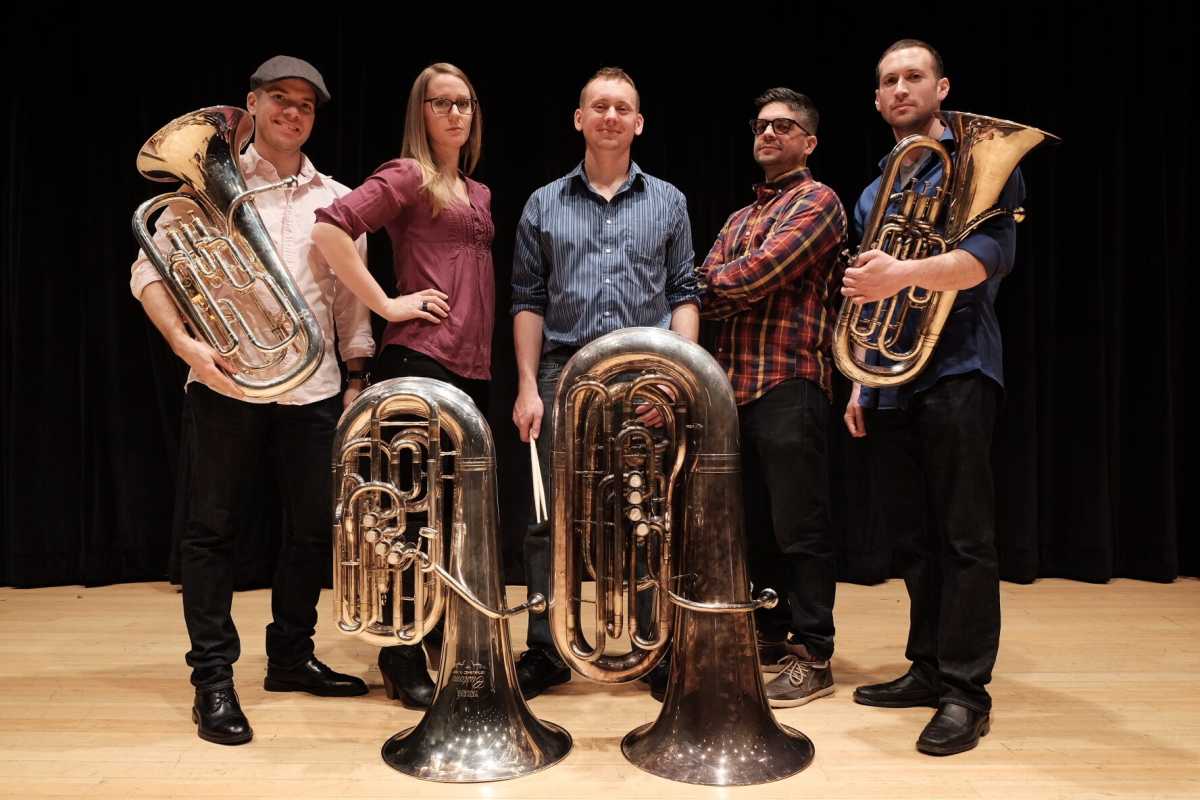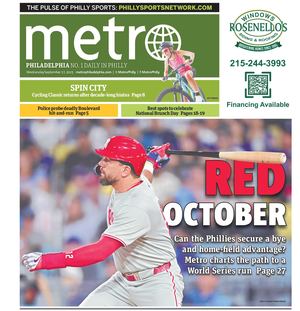One of many bad ideas perpetrated by the subjects of the classicmockumentary “This Is Spinal Tap” comes when every member of thehapless faux metal band picks up an electric bass to perform the lowend-centric ode to posteriors, “Big Bottom.” That memorablyugly-sounding precedent didn’t deter the four tuba and euphoniumplayers who make up Tubular from deciding to tackle pop song covers Where did the idea for Tubular come from? How do you find songs that work in all-tuba versions? How do Tubular shows complement your work with the orchestra? What originally drew you to the tuba?
with an exclusively low brass lineup. The idea was first floated whenall four were students at the University of Michigan more than adecade ago, and has now come to fruition as a side project for the
musicians, who all have day jobs with orchestras up and down the East Coast. As part of this year’s Fringe Festival, they’ll make theirdebut in Philly, where Carol Jantsch has been principal tuba of the
Philadelphia Orchestra since 2006. Jantsch discussed the project overthe phone from Houston, where she was busy working on a MichaelJackson medley to add to the band’s repertoire, which already includessongs by Lady Gaga, Outkast and Queen, among others.
I would bet that many, if not most, classical musicians have somepipe dream in the back of their minds somewhere of being a rock star.Playing euphoniums and tubas, you don’t often get to be the star ofthe show, so we thought if we make our own thing than we can be thestars of our own show. But we wanted to make sure that it didn’t suck,so it took a while to get going. I don’t know how many tuba quartetsyou’ve heard before, but it’s a thing that is really easy to make itsound bad.
Part of it is a question of willpower — how bad do you wantsomething to work? Then you just find a way. We do break it up a bit.Sometimes our faces or people’s ears need a break from the same
texture over and over, so there’s some singing, some sound effects andalternate instruments — you shouldn’t be surprised to hear a recorderor a kazoo. It does sound like rumbly elephant noises after a while,so we get creative with our solutions to make stuff sound as vibrantas the originals even though it’s down two octaves.
It’s low-pressure and high-fun. But it’s similar to the movie soundtracks that we’re playing with the orchestra. We played [a livescore to] “Lord of the Rings” back in July and we get a different kind
of audience than we see at a subscription concert. I call thosegateway concerts — it’s exposure for people to see that classicalmusic can be something approachable, that it doesn’t always have to be
a heady experience.
I knew I didn’t want a “normal kid” instrument. All the other kidswere playing flute and saxophone and trumpet, and I said, “What’s thatbig weird one? I want to do that.” When I’m walking down the street
carrying the tuba, people constantly ask, “Don’t you wish you playedthe piccolo?” and they think they’re very original and clever eventhough I’ve heard that thousands of times. Yeah, it would be a lot
less cumbersome, but there’s a uniqueness to the tuba and the tubacommunity. The stereotype for a tuba player is to be friendly andoutgoing and generally good-natured, and I find that to be true for the bulk of us. We have a really fun community, and I like to thinkthat our group is a good representation of that.
Tubular: The greatest tuba coverband you’ve ever seen

Provided

























